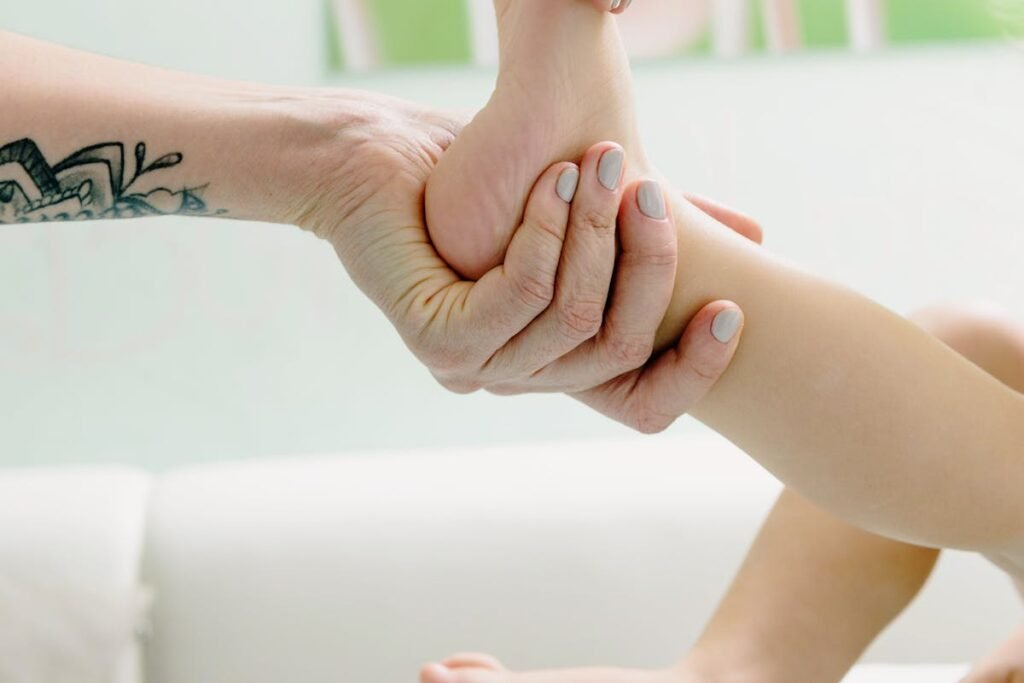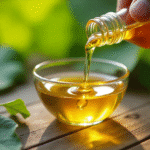Growing pains are a real challenge for many kids and adolescents. Thankfully, a natural remedy stands out for its effectiveness—massage for growing pains. With gentle strokes, targeted techniques, and a calming approach, massage therapy eases discomfort, supports better sleep, and helps the body cope with the rapid changes of growth spurts. This article breaks down how this age-old healing practice can be a game-changer for your child’s comfort and well-being.
Massage for growing pains is more than just a soothing rub. It’s a therapeutic approach tailored to address muscle tightness and pain in children experiencing rapid physical development. As kids grow, especially during their pre-teen and teen years, their bones often lengthen faster than their muscles can keep up. This imbalance can lead to nighttime aches, particularly in the legs.
By using specific massage techniques, such as Swedish strokes, myofascial release, and trigger point therapy, trained massage therapists help loosen tight muscle fibers, stimulate blood flow, and relieve pain. The treatment not only reduces physical discomfort but also calms the nervous system, promoting relaxation and emotional ease.
Understanding the Nature of Growing Pains
Growing pains typically occur in children aged 3 to 12, often appearing as throbbing aches in the legs, calves, thighs, or behind the knees. The pain usually strikes in the evening or night, which can disrupt sleep and leave kids cranky the next day. These pains are not related to growth plates or joint issues but are believed to stem from muscle fatigue, overuse, and tension.
Interestingly, the discomfort is often worse after days with high physical activity, suggesting that muscle strain plays a major role. This is why massage therapy, which addresses muscular tension directly, is so effective in managing the condition.
Why Massage Works Wonders on Young Bodies
Children’s muscles are flexible, but during growth spurts, they can become tight and sore. Massage encourages muscle relaxation, improves blood circulation, and reduces inflammation. For growing pains, the benefits of massage therapy include:
-
Reducing muscle tension
-
Enhancing oxygen and nutrient delivery to muscle tissue
-
Promoting lymphatic drainage to reduce soreness
-
Stimulating the release of endorphins, the body’s natural painkillers
This holistic approach doesn’t just mask symptoms—it targets the root causes of discomfort.
Techniques Used in Pediatric Massage for Growing Pains
Massage therapists trained in pediatric care use gentle, age-appropriate techniques. These often include:
-
Effleurage: Light, gliding strokes that promote relaxation and increase blood flow
-
Kneading: Gentle squeezing motions that soften tight muscles
-
Passive stretching: Helps lengthen muscles to accommodate bone growth
-
Trigger point therapy: Releases knots in deep tissue that can refer pain
Sessions are often short—around 30 minutes—and tailored to a child’s tolerance and comfort level.
When to Consider Massage for Your Child
Parents should consider massage for growing pains when their child:
-
Complains of leg or muscle pain in the evening
-
Has trouble sleeping due to discomfort
-
Is unusually cranky or tired after active days
-
Prefers physical touch or massage during periods of pain
A consultation with a pediatrician is always recommended to rule out other medical issues before beginning massage therapy.
The Role of Parental Touch in Managing Pain
Interestingly, parents themselves can offer relief through guided massage at home. With proper instruction from a licensed therapist, parents can perform gentle, comforting strokes that reduce their child’s pain. This not only eases physical discomfort but also strengthens the parent-child bond.
Massage becomes a moment of emotional support and healing. Touch therapy has been shown to decrease cortisol levels and improve mood in children experiencing stress and pain.
What to Expect During a Pediatric Massage Session
During a session, the environment is typically calm, quiet, and kid-friendly. The therapist may use hypoallergenic oils or lotions and communicate clearly with the child to ensure comfort. Parents are usually welcome to stay in the room.
The therapist works with the child’s feedback, adjusting pressure as needed. Sessions often end with calming techniques like rocking or holding still points, which help settle the nervous system.
Massage vs. Medications for Growing Pains
Many parents turn to over-the-counter pain medications like ibuprofen or acetaminophen to help their children. While these can be effective short-term solutions, they do not address muscular tension—the likely root cause of growing pains.
Massage, on the other hand, offers a non-invasive, drug-free alternative that not only alleviates pain but also supports healthy development. It enhances circulation, helps muscles adapt to skeletal changes, and avoids potential side effects of frequent medication use.
How Regular Massage Can Prevent Recurring Pain
Routine massage sessions can actually prevent the recurrence of growing pains. By keeping the muscles supple, stretched, and nourished, massage helps the body adapt to rapid changes more smoothly.
Think of it as proactive wellness rather than reactive treatment. Weekly or bi-weekly sessions during intense growth periods may significantly reduce the severity and frequency of pain episodes.
Also read: Cold Pressed Castor Oil: Amazing Uses and Benefits
FAQs
What is the best age to start massage for growing pains?
Massage is safe for children as young as three, provided it’s done by a certified pediatric massage therapist. Always check with your pediatrician before starting.
Can I massage my child at home for growing pains?
Yes, with proper guidance, parents can use basic techniques to help. Focus on gentle strokes and avoid deep pressure.
Is massage a permanent solution for growing pains?
While massage may not eliminate growing pains entirely, it significantly reduces their severity and frequency.
Are there any risks with massage therapy for kids?
When performed by a trained professional, pediatric massage is safe. Avoid massage if there’s a fever, rash, or injury present.
How often should my child get massage therapy?
This depends on the child’s needs. Weekly sessions during growth spurts can be beneficial. Some children may do well with sessions every 2–3 weeks.
Does insurance cover massage therapy for children?
Some health insurance plans may cover therapeutic massage if prescribed by a physician. It’s best to check with your provider.
Conclusion
Massage for growing pains is an effective, gentle, and nurturing solution that addresses both the physical and emotional challenges of growth. As children’s bodies stretch and change, supporting them with compassionate touch can ease their journey into adolescence. Whether done professionally or at home, massage helps kids sleep better, move with ease, and feel supported through their growing years.


